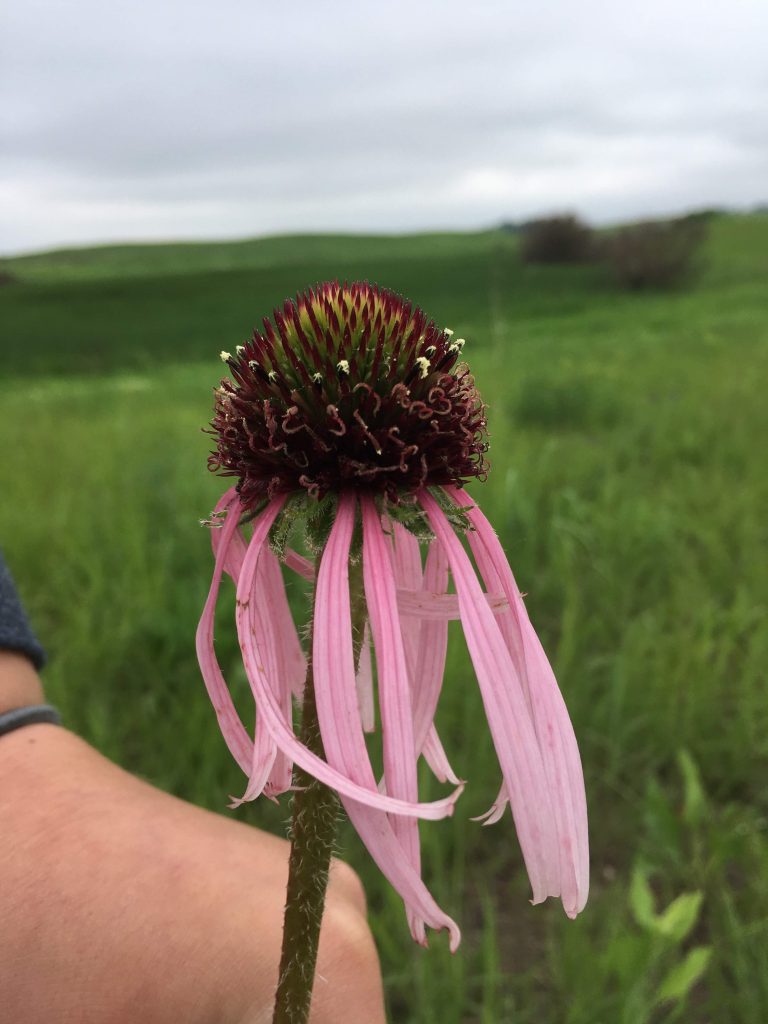Echinacea pallida is a species of Echinacea that is not native to Minnesota. It was mistakenly introduced to our study area during a restoration of Hegg Lake WMA. Since 2011, Team Echinacea has visited the pallida restoration and taken flowering phenology and collected demography on the non-native. This year, we decapitated all flowering Echinacea pallida to avoid interspecific pollination with the local Echinacea angustifolia. We fear that Echinacea hybrids may be infertile, so we want to avoid the establishment of as many hybrids as possible.
This year, a team slogged through the Hegg Lake restoration to find flowering Echinacea pallida. We recorded the number of heads on each plant, the number of rosettes (some plants were absolutely massive), shot gps points at all plants, and then chopped the flowering heads off! We visited the restoration and cut E. pallida heads off on July 8th, 9th and 10th of 2019. We revisited plants and shot gps points for them on July 11th, July 12th, and August 1st.

Overall, we found and shot points for 97 flowering E. pallida. On average, each plant produced 2.5 flowering heads. That’s way more than an average E. angustifolia!The average rosette count was 5.4, another big number! The largest plant had 23 rosettes.
We collected tissue samples of E. angustifolia, E. pallida, and known hybrids so Elif can assess ploidy at the Chicago Botanic Garden using the flow cytometer.
Start year: 2011
Location: Hegg Lake Wildlife Management Area Restoration
Overlaps with: Echinacea hybrids (exPt6, exPt7, exPt9), flowering phenology in remnants, demographic census in remnants
Data collected: Demography data, head counts, rosette counts, gps points shot for each E. pallida. Cut Echinacea pallida heads, tissue samples for ploidy analysis. Find demo and phenology visor records in the aiisummer2019 repository. Phenology visor records were taken when we cut heads and demography records were taken when we shot GPS points. GPS points can be found in Demap.
Previous team members who worked on this project: Nicholas Goldsmith (2014), Shona Sanford-Long (2012), Dayvis Blasini (2013), and Cam Shorb (2014)

Leave a Reply